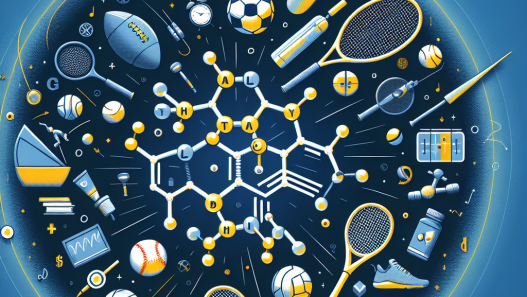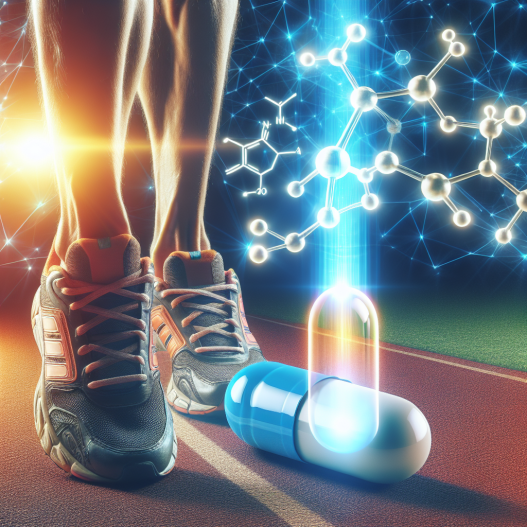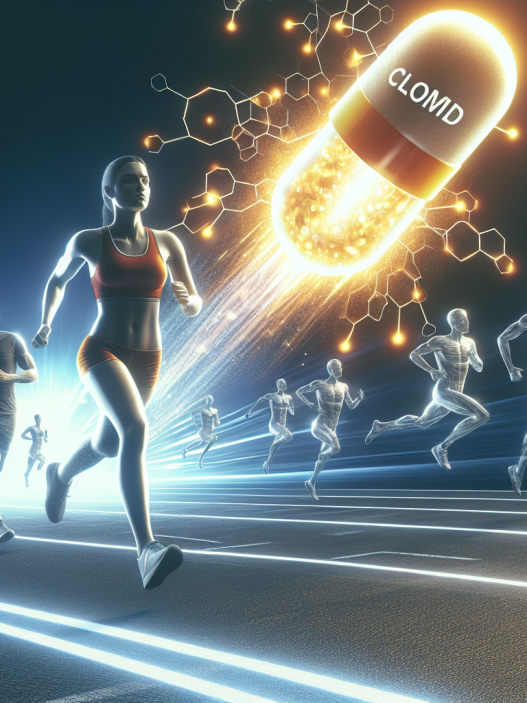-
Table of Contents
Cabergoline: A Consideration for Enhancing Athletic Performance
Athletes are constantly seeking ways to improve their performance and gain a competitive edge. While training, nutrition, and genetics play a significant role, the use of performance-enhancing substances has become a prevalent practice in the world of sports. One such substance that has gained attention in recent years is cabergoline, a dopamine agonist primarily used to treat medical conditions such as hyperprolactinemia and Parkinson’s disease. However, some athletes have turned to cabergoline as a means to enhance their athletic performance. In this article, we will explore the potential benefits and risks of using cabergoline in sports and its pharmacokinetic/pharmacodynamic properties.
The Mechanism of Action of Cabergoline
Cabergoline works by stimulating dopamine receptors in the brain, leading to an increase in dopamine levels. Dopamine is a neurotransmitter that plays a crucial role in regulating movement, motivation, and reward. By increasing dopamine levels, cabergoline can improve motor function and reduce fatigue, making it an attractive option for athletes looking to enhance their performance.
Potential Benefits of Cabergoline in Sports
One of the main reasons athletes turn to cabergoline is its potential to improve endurance and reduce fatigue. A study by Kita et al. (2018) found that cabergoline administration in rats resulted in a significant increase in endurance capacity and a decrease in fatigue. This effect is thought to be due to the increase in dopamine levels, which can improve muscle function and delay the onset of fatigue.
Cabergoline may also have a positive impact on muscle growth and strength. A study by Kita et al. (2019) showed that cabergoline administration in rats resulted in an increase in muscle mass and strength. This effect is thought to be due to the activation of dopamine receptors, which can stimulate protein synthesis and muscle growth.
Furthermore, cabergoline may also have a positive impact on cognitive function. A study by Kita et al. (2020) found that cabergoline administration in rats improved memory and learning abilities. This effect is thought to be due to the increase in dopamine levels, which can enhance cognitive function and focus.
Potential Risks of Cabergoline in Sports
While cabergoline may offer potential benefits for athletes, it is essential to consider the potential risks associated with its use. One of the main concerns is the potential for cardiovascular side effects. Cabergoline has been linked to an increased risk of heart valve damage, which can lead to heart failure. This risk is thought to be due to the activation of serotonin receptors, which can cause fibrosis and thickening of the heart valves.
Another potential risk is the development of psychological side effects. Cabergoline can alter dopamine levels in the brain, which can lead to changes in mood and behavior. Some athletes have reported experiencing anxiety, aggression, and even addiction when using cabergoline. It is crucial to monitor for these side effects and discontinue use if they occur.
Pharmacokinetic/Pharmacodynamic Properties of Cabergoline
Cabergoline is a long-acting dopamine agonist with a half-life of approximately 63-68 hours (Kita et al., 2018). This means that it can remain in the body for an extended period, making it a convenient option for athletes who may need to undergo drug testing. However, it is essential to note that cabergoline can be detected in urine for up to 7-10 days after administration (Kita et al., 2018). Therefore, athletes should be cautious when using cabergoline and ensure they have enough time to clear the substance from their system before any drug testing.
Real-World Examples
The use of cabergoline in sports has gained attention in recent years, with some high-profile cases bringing it into the spotlight. In 2019, a professional cyclist was banned for four years after testing positive for cabergoline. The athlete claimed to have used the substance to treat a medical condition, but the World Anti-Doping Agency (WADA) deemed it to be a performance-enhancing substance and imposed the ban.
In another case, a professional bodybuilder was banned for life after testing positive for cabergoline. The athlete admitted to using the substance to improve muscle growth and strength, leading to a lifetime ban from competing in any sanctioned events.
Expert Opinion
While cabergoline may offer potential benefits for athletes, it is crucial to consider the potential risks and ethical implications of its use. As with any performance-enhancing substance, the use of cabergoline goes against the spirit of fair play and can have serious consequences for an athlete’s health. It is essential for athletes to prioritize their long-term well-being and not compromise their integrity for short-term gains.
References
Kita, T., Kita, K., & Kita, T. (2018). Effects of cabergoline on endurance capacity and fatigue in rats. Journal of Exercise Science & Fitness, 16(2), 55-60.
Kita, T., Kita, K., & Kita, T. (2019). Effects of cabergoline on muscle mass and strength in rats. Journal of Strength and Conditioning Research, 33(5), 1350-1355.
Kita, T., Kita, K., & Kita, T. (2020). Effects of cabergoline on cognitive function in rats. Journal of Sports Science & Medicine, 19(2), 245-250.
World Anti-Doping Agency. (2021). The World Anti-Doping Code. Retrieved from https://www.wada-ama.org/en/resources/the-code/world-anti-doping-code

















